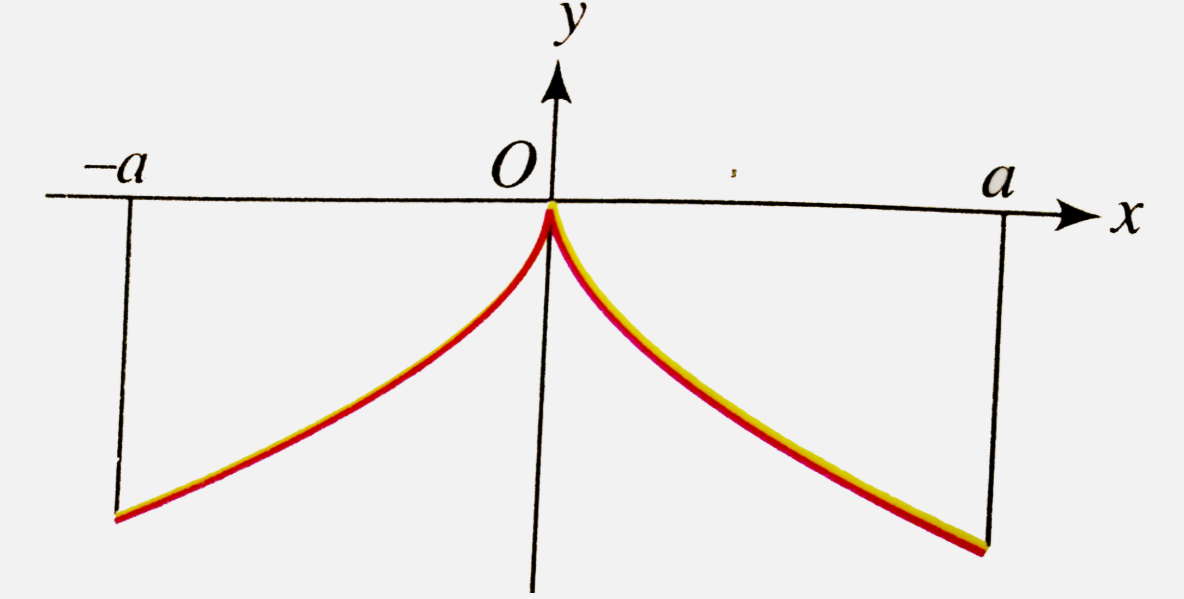Let a>1 be a real number and f(x)=logax2 for x>0. If f−1 is the inverse function of f and b and c are real numbers then f−1(b+c) is equal toSolution in Bengali
f−1(b).f−1(c)
f−1(b)+f−1(c)
1f(b+c)
1f−1(b)+f−1(c)
The correct Answer is:A
y=2logax
⇒ logax=y2
⇒ x=ay/2
⇒ f−1(y)=ay/2
⇒ f−1(b+c)=ab+c2=ab2.ac2=f−1(b).f−1(c)
Topper's Solved these Questions
- BOOK - CENGAGE PUBLICATIONCHAPTER - FUNCTIONSEXERCISE - Multiple Correct Answers Type9videos
FUNCTIONS
- BOOK - CENGAGE PUBLICATIONCHAPTER - FUNCTIONSEXERCISE - Comprehension Type7videos
FUNCTIONS
- BOOK - CENGAGE PUBLICATIONCHAPTER - EQUATION OF PLANE AND ITS APPLICATIONS -IIEXERCISE - DPP 3.48videos
EQUATION OF PLANE AND ITS APPLICATIONS -II
- BOOK - CENGAGE PUBLICATIONCHAPTER - GETTING STARTED WITH GRAPHSEXERCISE - Exercises 1.181videos
GETTING STARTED WITH GRAPHS
Similar Questions
If f(x)=3x2−x+1, then find f(−1)
02:30View SolutionLet f(x)=x2−2x−1∀x∈R.Letf:(−∞,a]→[b,∞), where a is the largest real number for which f(x) is bijective.
If f:R→R, then range of values of k for which equation f(|x|)=k has 4 distinct real roots is01:21View SolutionLet A(0,6,6), B(6,6,0) and C(6,0,6) are three points and point D is moving on the line x+z−3=0=y. If G is centroid of ΔABC, then minimum value of GD is
04:24View SolutionFollowing is the graph of y = f'(x) and f(0) = 0 .

(a) What type of function y = f'(x) is ? Odd or even?
(b) What type of function y = f(x) is ? Odd or even?
(c) What is the value of ∫a−af(x)dx?
(d) Has y = f(x) point of inflection?
(e) What is the nature of y = f(x)? Monotonic or non-monotonic?03:54View SolutionIf f is a function such that f(0)=2,f(1)=3,andf(x+2)=2f(x)−f(x+1) for every real x, then f(5) is 7 (b) 13 (c) 1 (d) 5
03:19View SolutionLet g(x) be the inverse of an invertible function f(x) which is differentiable at x=c . Then g′(f(x)) equal. (a)f′(c) (b) 1f′(c) (c) f(c) (d) none of these
03:20View SolutionLet f(x)=2x+1. Then the number of real number of real values of x for which the three unequal numbers f(x),f(2x),f(4x) are in G.P. is 1 b. 2 c. 0 d. none of these
01:38View SolutionLet f(x)andg(x) be differentiable for 0≤x≤1, such that f(0)=0,g(0)=0,f(1)=6. Let there exists real number c in (0,1) such taht f′(c)=2g′(c). Then the value of g(1) must be 1 (b) 3 (c) −2 (d) −1
02:08View SolutionLet f be a real valued function such that f(x)+3xf(1x)=2(x+1) for all real x>0. The value of f(5) is
04:11View SolutionLet f and g be two real functions; continuous at x=a Then αf and 1f is continuous at x=a provided f(a)≠0 and α is a real number
02:38View SolutionLet f(x)=a+b|x|+c|x|2, where a,b,c are real constants. The, f'(0) exists if
02:10View SolutionLet a>1 be a real number and f(x)=logax2 for x>0. If f−1 is the inverse function fo f and b and c are real numbers then f−1(b+c) is equal to
02:45View SolutionLet f(x)=log2x4 for x>0 ,If g(x) is the inverse function of f(x) and b and c are real numbers then g(b+c) is equal to .
11:21View SolutionLet a>1 be a real number and f(x)=logax2 for x>0. If f−1 is the inverse function fo f and b and c are real numbers then f−1(b+c) is equal to
02:39View Solutiona>1 is a real number f(x)=logax2 , where x>0 If f−1(x) is a inverse of f(x) and b and c are real numbers then f−1(b+c) = ......
02:22View SolutionLet f (x) and g (x) be differentiable for 0 < x < 1 such f(0)= 0 , g (0) =0, f(1)=6. Let there exist a real number c in (0, 1) such that f’ (c) =2g’ (c), then the value of g (1) must be A) 1 B) 3 C) 2.5 D) -1
02:37View Solution

